End of Employment Contract Letter Template
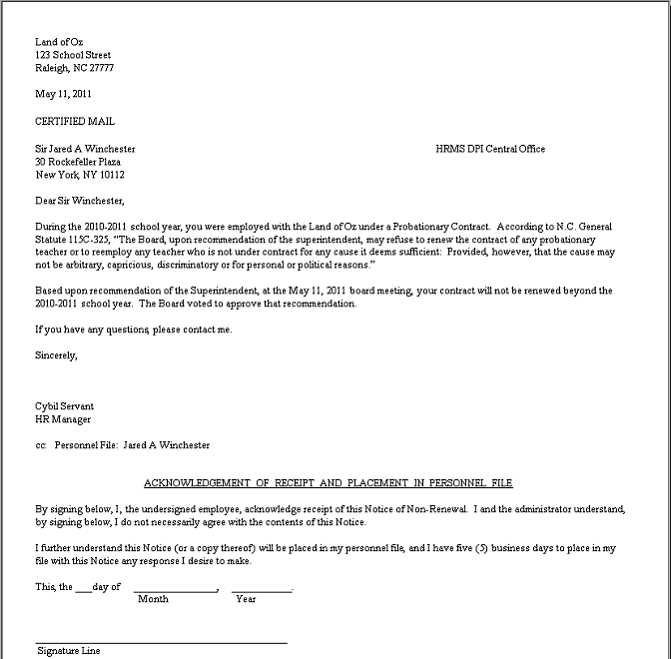
When an individual concludes their working relationship with a company, a formal document is often required to clearly outline the details of the separation. This written notice serves as an official record of the decision, protecting both the employer and the employee. Creating a proper termination notice is essential to ensure that all legal and procedural matters are addressed.
Essential Elements of a Termination Notice
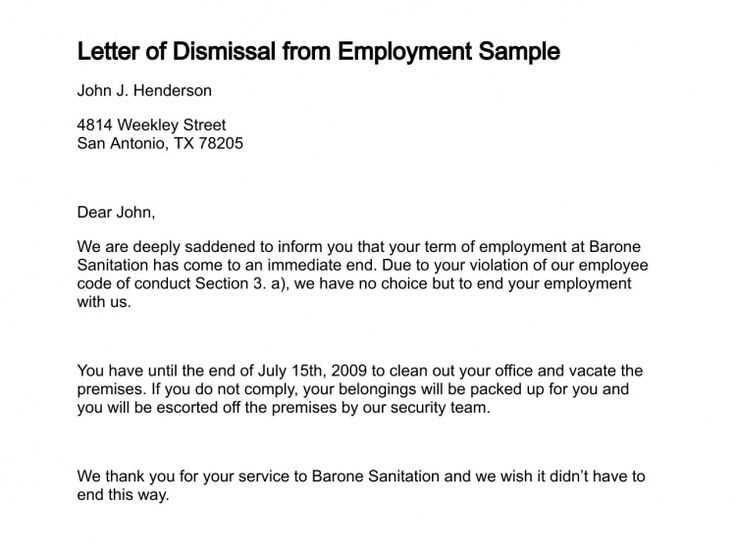
A well-written separation document includes several key details to make the process smooth and transparent. These are the main components to include:
- Employee Information: Full name, job title, and department.
- Reason for Separation: A brief explanation of the reason for the end of the working relationship, whether voluntary or involuntary.
- Final Day: Clearly state the last working day.
- Outstanding Obligations: Any remaining tasks, return of company property, or other responsibilities.
- Severance or Benefits: Outline any severance, benefits, or financial settlements if applicable.
Steps to Drafting a Termination Document
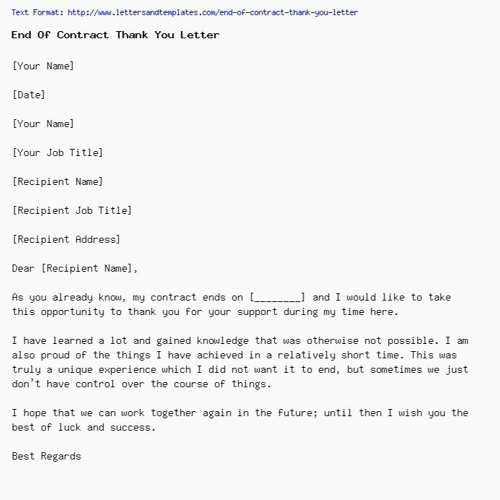
Follow these steps to ensure the separation document is professionally written and legally compliant:
- Begin with a Clear Introduction: State the purpose of the document and confirm the decision to part ways.
- Provide Details of the Final Day: Mention the official date of termination and any expectations for the final workday.
- State the Reason for Departure: If applicable, give a brief, neutral explanation of why the relationship is ending.
- Address Final Payments: Include any details about final pay, severance, or other compensation owed to the individual.
- Conclude with Acknowledgment: Confirm receipt of company property and any agreements or confidentiality clauses still in effect.
Common Pitfalls to Avoid
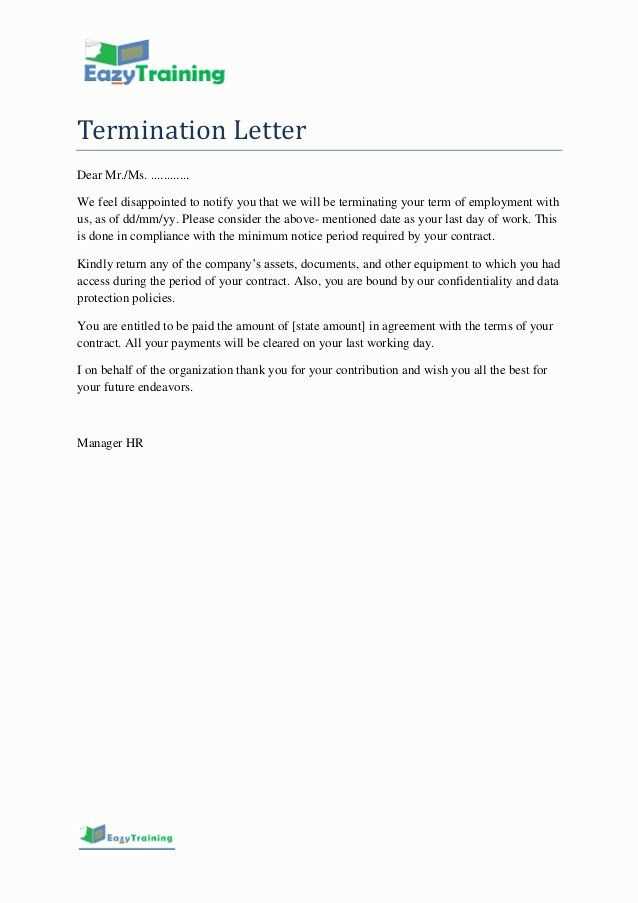
When drafting this type of communication, it is crucial to avoid certain mistakes that could lead to confusion or legal issues:
- Avoid Ambiguous Language: Be clear and direct in your wording to prevent misinterpretation.
- Don’t Omit Legal Information: Ensure that all legal requirements are addressed, such as final pay or benefits.
- Be Professional: Keep the tone neutral and respectful, regardless of the reason for the termination.
Customizing the Document for Specific Circumstances
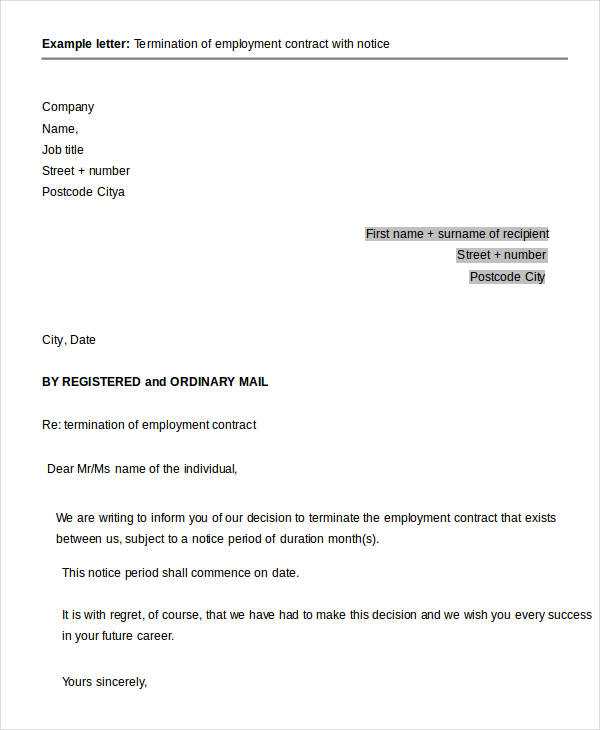
Every separation is unique, and it is important to tailor the document to reflect the individual circumstances. Whether the departure is due to retirement, resignation, or company policy, customize the document to address the situation accurately and with care.
Examples of Formal Termination Documents
Below are a few examples of how such documents might look in practice:
- Example 1: For a resignation with proper notice and no further obligations.
- Example 2: For an involuntary separation due to performance issues or business restructuring.
Understanding the Importance of a Formal Separation Notice
When concluding a professional relationship, having a well-drafted document is crucial. It ensures that both the individual and the organization are aligned on the terms of the departure and that all legal requirements are met. Crafting such a document can prevent misunderstandings and protect both parties in the event of future disputes.
Key elements in this document are necessary to outline the essential details clearly and concisely. These components will help provide clarity regarding the separation process, including the final working day, responsibilities, and any financial settlements owed to the individual. A structured approach ensures a smooth transition for both parties.
Creating this document can be simple with a step-by-step guide. Begin by stating the reason for the separation, whether voluntary or not, then follow with specifics about the last day of work and the return of company assets. Providing the necessary details without ambiguity ensures that all parties are on the same page.
There are important legal considerations when terminating a professional relationship. For example, laws may govern final payments, severance, or benefits owed to the individual. It is vital that the document reflects these legalities to avoid any potential legal complications for either side.
Common mistakes include vague language or the omission of crucial details, such as the final day of work or settlement terms. It is essential to be clear, specific, and respectful, addressing all required information to prevent any issues down the line.
Tailoring the document to the specific situation is equally important. Whether the separation is due to personal reasons, business needs, or any other circumstance, making sure the document accurately reflects the situation ensures a professional and thoughtful approach.
Examples of well-crafted documents provide a useful reference point. By looking at successful templates, you can understand the proper tone and structure needed to communicate the separation clearly and professionally.